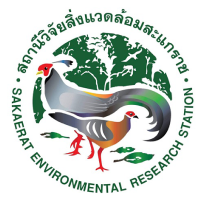Keywords :
Amphibian; Conservation; Seasonal Patterns; Protected area Management
บทคัดย่อ :
Habitat destruction and degradation in the tropics have led to a dramatic increase in altered habitats. Understanding the impacts of these disturbed areas on biodiversity will be critical to future conservation efforts. Despite heavy deforestation, Southeast Asia is underrepresented in studies investigating faunal communities in human-modified landscapes. This project assessed the herpetofaunal community in dry dipterocarp forest, secondary disturbed forest, and Eucalyptus plantations in the Sakaerat Biosphere Reserve. In May, June, and September of 2015, we surveyed using 10 passive trapping arrays. Both the Eucalyptus plantations and secondary disturbed forest habitats (224 and 141 individuals, respectively) had higher amphibian abundance than the dry dipterocarp forest (57 individuals), but we observed significant seasonal variation in amphibian abundance. During the wetter month of September, we recorded higher numbers of amphibian individuals and species. In particular, we noted that distance to a streambed influenced amphibian abundance during the rainy season. The three most abundant species in May and June were Microhyla fissipes, Fejervarya limnocharis, and Microhyla pulchra. In September, the three most abundant species were Microhyla fissipes, Glyphoglossus molossus, and Kaloula mediolineata. Our findings suggest that seasonal resources should be considered when conducting monitoring programs and making conservation decisions for amphibians.
เอกสารอ้างอิง :
Crane, M., Strine, C., & Suwanwaree, P. (2018). Seasonal and Land Use Effects on Amphibian Abundance and Species Richness in the Sakaerat Biosphere Reserve, Thailand. Applied Environmental Research, 40(1), 57-64.



